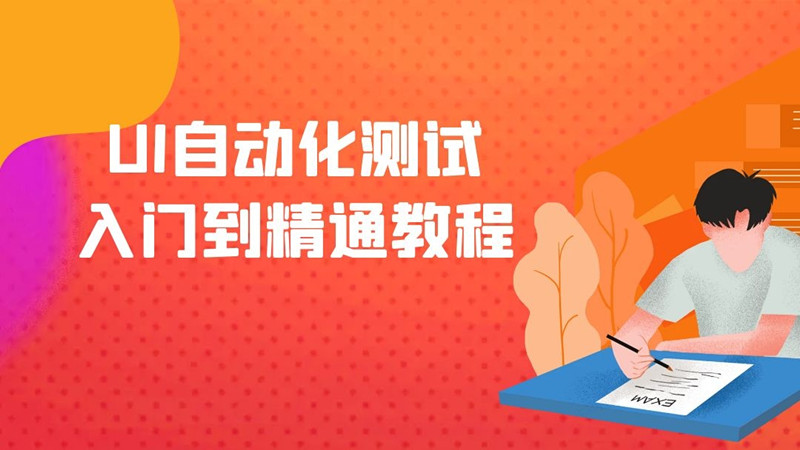一天一个关于测试知识点,5分钟内讲解你最关心的软件测试问题,今天就接着来谈谈关于软件测试中的“PythonGUI必备自动化测试工具”。

图形用户界面(GUI)是为用户交互提供灵活性的界面,很多小伙伴都希望把自己的Python小程序都加上一个可视化界面。即美观,又有交互性。常见的PythonGUI必备自动化测试工具:
1. pywinauto
pywinauto是一组用于自动化Microsoft Windows GUI的python模块。 最简单的是,它允许您将鼠标和键盘操作发送到窗口对话框和控件。
下载: https://pypi.org/project/pywinauto/
安装: pip install pywinauto
示例
from pywinauto.application import Application
app = Application(backend="uia").start('notepad.exe')
# 描述Notepad.exe进程内的窗口
dlg_spec = app.UntitledNotepad
# 等到窗户真的开着
actionable_dlg = dlg_spec.wait('visible')
from subprocess import Popen
from pywinauto import Desktop
Popen('calc.exe', shell=True)
dlg = Desktop(backend="uia").Calculator
dlg.wait('visible')
2. Pywin32
Pywin32提供了很多访问windows的API。较重要的三个模块就是win32api、win32gui和win32con
下载: https://pypi.org/project/pywin32/223/
安装:pip install pywin32
示例:
import time
import win32gui,win32con
import keyboardEmulation as ke
def get_windows(windowsname,filename):
# 获取窗口句柄
hwnd = win32gui.FindWindow(None,windowsname)
# 将窗口放在前台,并激活该窗口
win32gui.SetForegroundWindow(hwnd)
# 输入helloworld
scancodes = [0x23, 0x12, 0x26, 0x26, 0x18, 0x11, 0x18, 0x13, 0x26, 0x20, 0x2a]
for code in scancodes:
ke.key_press(code)
# 保存
ke.key_down(0x1d)
ke.key_down(0x1f)
ke.key_up(0x1d)
ke.key_up(0x1f)
# 关闭窗口
time.sleep(1);
win32gui.PostMessage(hwnd, win32con.WM_CLOSE, 0, 0)
get_windows("新建文本文档 (2).txt - 记事本","截图.png")
3. pyautogui
PyAutoGUI是一个纯Python的GUI自动化工具,其目的是可以用程序自动控制鼠标和键盘操作,多平台支持(Windows,OS X,Linux)
下载: https://pyautogui.readthedocs.io/en/latest/
安装:pip3 install pyautogui
示例:
#导入模块
from PIL import ImageGrab
import pyautogui as auto
#定义类
class Screenshoot:
def __init__(self):
#self.bbox = bbox
#self.name = name
#self.im = ImageGrab.grab(self.bbox)
#定位xy坐标,confidence为相似度判断,最好不要使用1.0完全相似,比较容易不识别
self.position_1 = auto.locateCenterOnScreen('1.png', confidence=0.9)
self.position_2 = auto.locateCenterOnScreen('2.png', confidence=0.9)
self.position_3 = auto.locateCenterOnScreen('+.png', confidence=0.9)
self.position_4 = auto.locateCenterOnScreen('=.png', confidence=0.9)
pass
def fullshoot(self):
#全屏截图
#self.im.save('01.png')
pass
def partialshoot(self):
#局部精确截图
#self.im.save(self.name+'.png')
pass
def position_show(self):
#打印各坐标
print(self.position_1)
print(self.position_2)
print(self.position_3)
print(self.position_4)
def caculate(self):
#依次点击按钮
auto.click(self.position_1)
auto.click(self.position_3)
auto.click(self.position_2)
auto.click(self.position_4)
#对象初始化
shoot1 = Screenshoot()
#对象函数执行
shoot1.position_show()
shoot1.caculate()
#shoot1.partialshoot()
#shoot1.fullshoot()